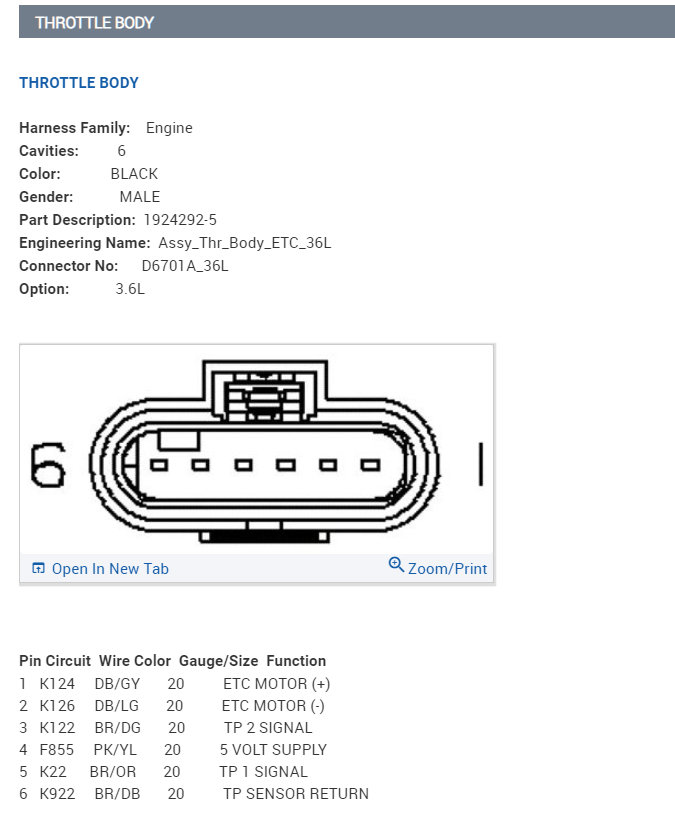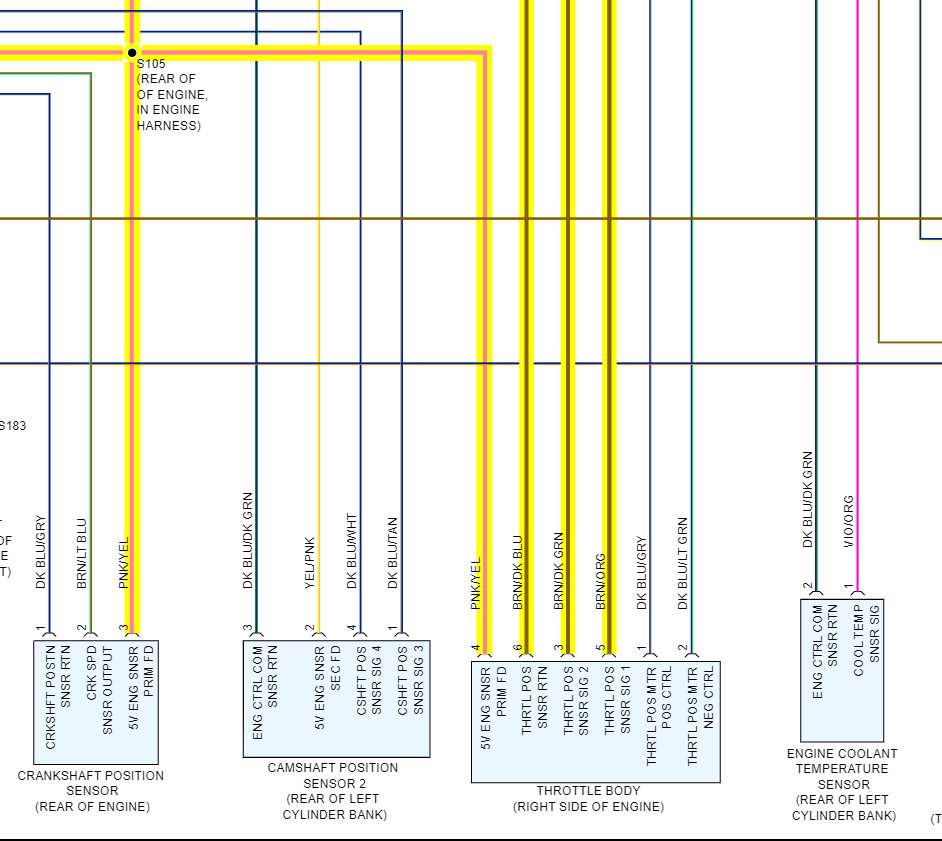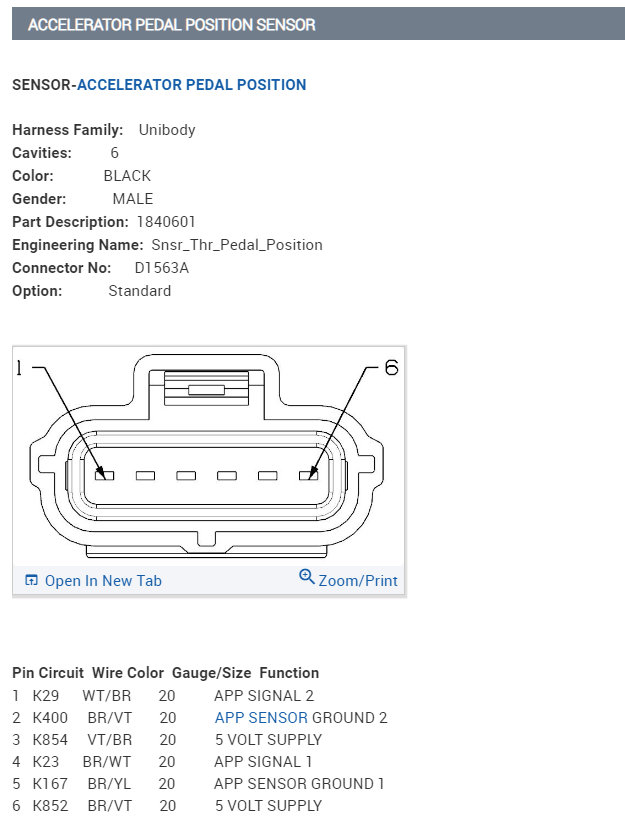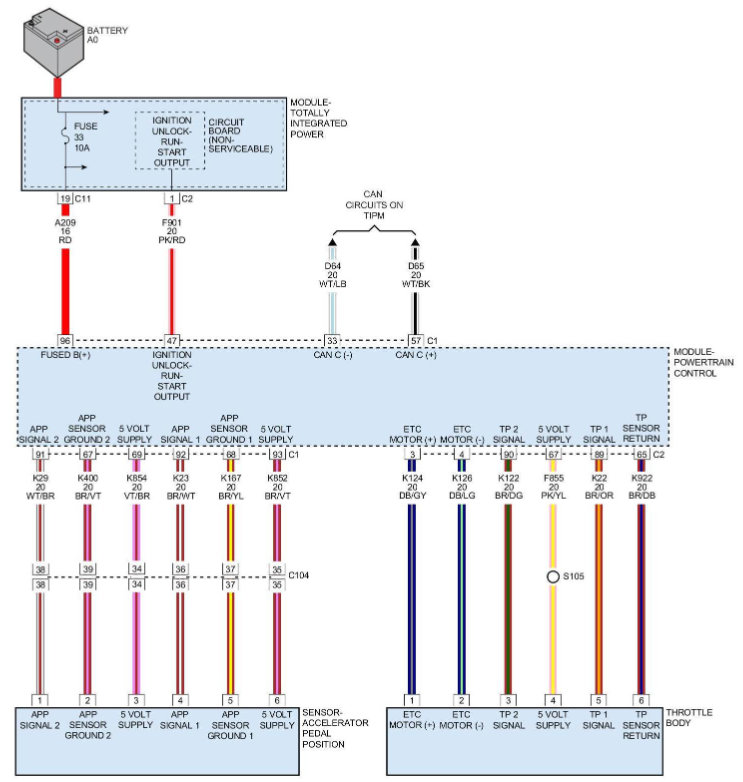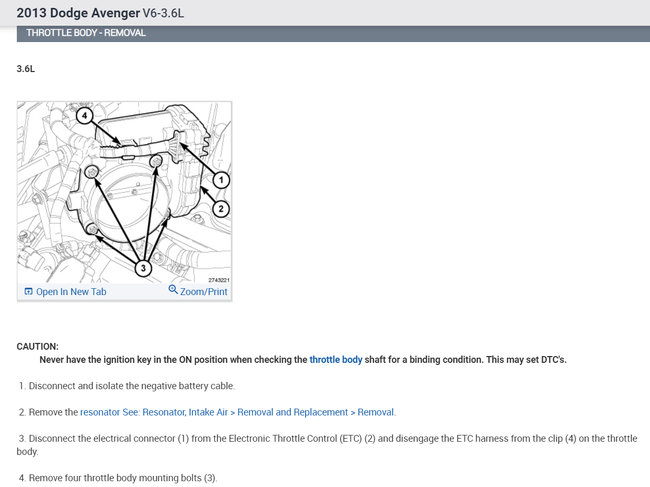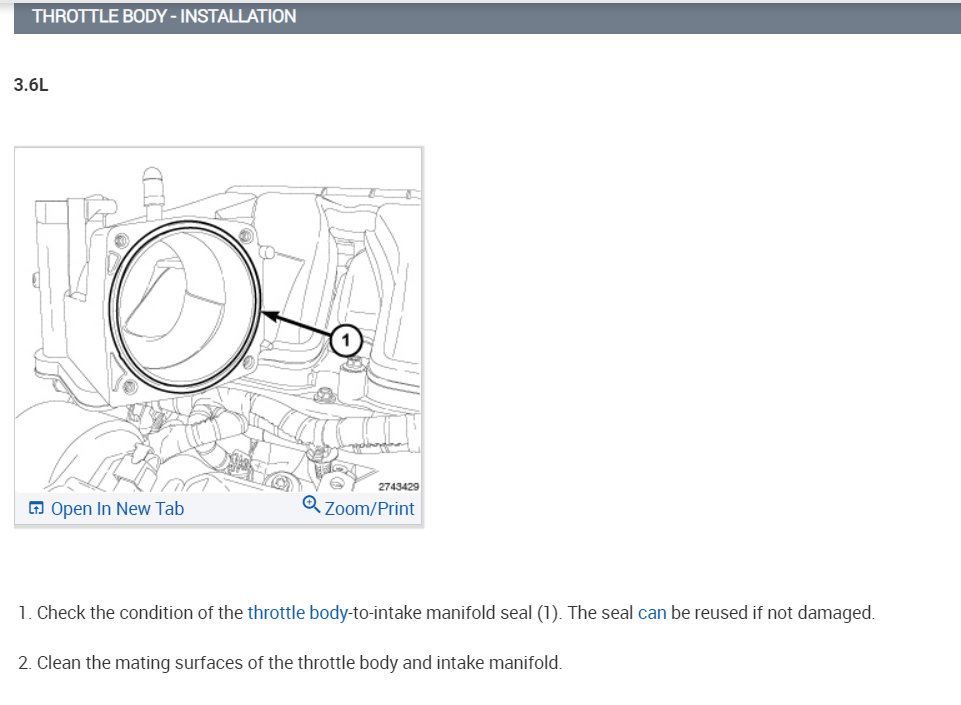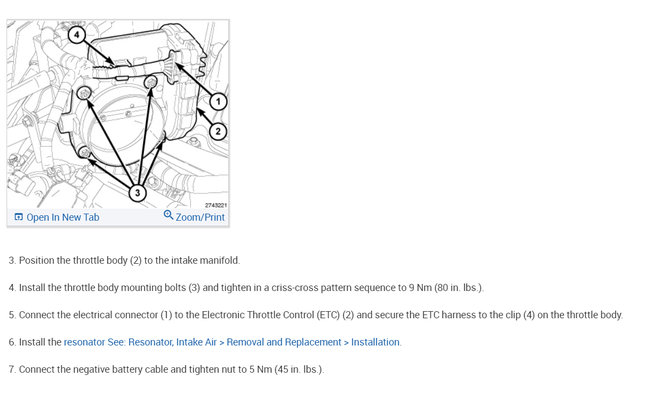Hello, depending on the exact code number there are two throttle position sensors built into the Throttle Body, and there are two Accelerator Pedal Position sensors on the gas pedal. I'll put diagrams and instructions for both.
For the Throttle Body, there is one 5-volt Reference Feed, two Signal wires TP1 and TP2, and one TP sensor Return (Ground). The first diagram is the throttle body pinout. Since you actually got a TPS code, checking the throttle body first would be recommended. If you unplug the 6-wire connector on the throttle body, turn the key to just the "on" position, engine off. Using a basic multimeter, put the red lead on the pink/yellow wire and the other lead on the brown/dark blue wire, you should read 5-volts. But if you can give us the actual codes it would be faster so we can test the correct circuit without going through all the others.
Testing for the APP sensor is below. But most likely you are missing 5-volts at the Throttle Body.
For the Accelerator Pedal Position sensor, even though you replaced the sensor, you need to check that the sensor is receiving its Reference Voltage, Ground and Signal wires. If the Reference Voltage is low, the Signal will be low too. Here is a pinout to the sensor. It's a double APP sensor. So, it has two 5-volt Reference wires, two Grounds, and two Signal wires going to the ECM. This is known as a Drive By wire system. The ECM controls the throttle plates and throttle body. The APP sensor is an Input to the ECM. So, you can unplug the sensor on the pedal, and with the Key On, engine off, as you can see from the diagram pins 3 and 6 are the 5-volt Ref. So, if you take a basic multimeter and on a voltage setting, put the red lead on pin 3 and the black lead on pin 2 (which is the sensor ground) you should read 5-volts. Do the same with pins 6 and 5 should also read 5-volts.
If for some reason you are missing one of the 5-volts readings, further diagnosing is needed. There are lots of sensors on the vehicle that use the 5-volt reference. And if one of those other sensors is shorted out, it will affect the 5-volt reference for other sensors.
https://www.2carpros.com/articles/how-to-use-a-voltmeter
https://www.2carpros.com/articles/how-to-check-wiring
Images (Click to make bigger)
Sunday, July 17th, 2022 AT 9:08 PM
